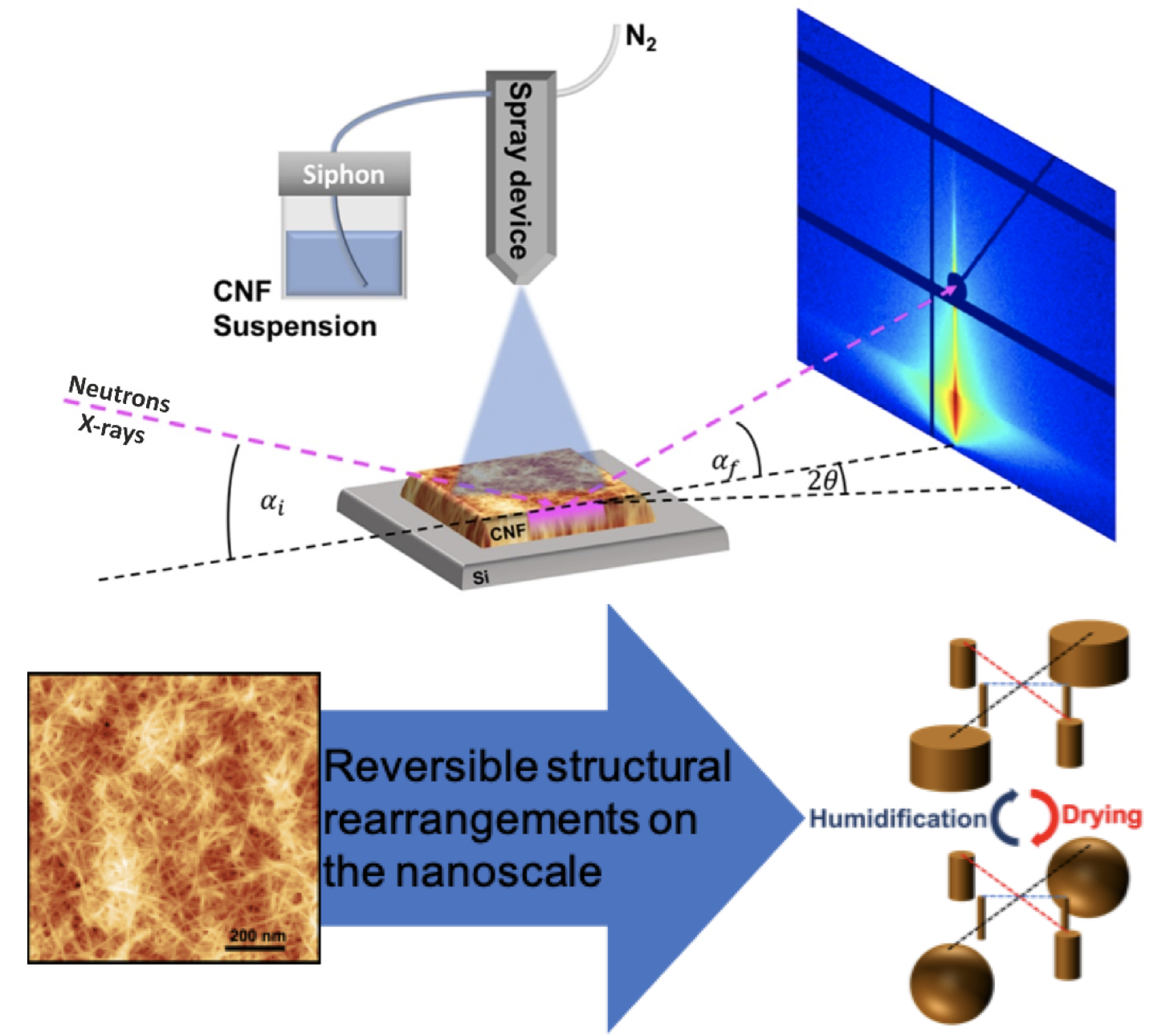GISANS revealed water influence on biobased thin films
Why?
Nanostructured porous thin films made from biocompatible cellulose nanofibrils (CNF) are widely used due to their attractive properties such as made from renewable resources, low density, lightweight, thermal stability, and excellent mechanical properties. These prerequisites make CNF a promising precursor for the design of bio composites and bio-inspired sensors. One crucial question is the relation between the layering of the CNFs, porosity and nanostructure inside the thin film. The knowledge of the nature of porosity and its behavior under environmental influences of the thin film is crucial for subsequently functionalizing the pores by filling with functional polymers, thus creating functional CNF composites.
How?
Grazing incidence small-angle scattering methods were applied to study the thin film morphology on nanocellulose thin films to gain understanding of the inner morphology. The quest was to understand surface charge effects of the individual CNFs on the packing inside the thin film. Surface topographical methods as atomic force microscopy revealed a roughness decrease, but otherwise no change in morphology. However, GISAXS measurements revealed that an increase in surface charge leads to more bound water in these thin films. Hence, GISANS with high contrast to D2O within a humidity chamber was applied to study the water sorption effect under cyclic humidification of the thin films. Figure 1 shows the schematic spray setup during the GISAXS experiment as well as the model used for the modelling of the structural rearrangement on the nanoscale.

Figure 1. Reprinted with permission from C. J. Brett et. al. Macromolecules, (2019) 52, 12, 4721-4728. Copyright 2019 American Chemical Society.
Who?
The project is led by Adj. Prof. Stephan V. Roth from the Deutsches Elektronen-Synchrotron (DESY) and from the Fibre and Polymer Technology Department at KTH Royal Institute of Technology, in collaboration with scientists from several disciplines at KTH, from Technical University of Munich, from Juelich Centre of Neutron Science (JCNS) and DESY. The GISANS experiments were performed at the Heinz Maier-Leibnitz Zentrum (MLZ) in Munich, Germany and the GISAXS experiments were conducted at the MiNaXs beamline P03 at DESY in Hamburg, Germany.
What's next?
We recently started to further elucidate the porous template backfilling by conjugated conductive polymers to observe herein multilayer effects as well as the influence of water sorption. These functionalized thin films are studied under cyclic humidity variations by the means of GISANS which allow the correlation of structural evolution to conductivity measurements. This inherently leads to lifetime cycle understanding and paths the way to high-end applications i.e. in sensors or organic photovoltaics.
Contact:
MSc. Calvin J. Brett, KTH & DESY
calvinbr@kth.seAdj. Prof. Dr. Stephan V. Roth, KTH & DESY
svroth@kth.seDocent Dr. Daniel Söderberg, KTH, Treesearch
dansod@kth.se
Water-Induced Structural Rearrangements on the Nanoscale in
Ultrathin Nanocellulose Films
Calvin J. Brett, Nitesh Mittal, Wiebke Ohm, Marc Gensch, Lucas P. Kreuzer, Volker Körstgens, Martin Månsson, Henrich Frielinghaus, Peter Müller-Buschbaum, L. Daniel Söderberg, Stephan V. Roth
Macromolecules 52, 12, 4721-4728 (2019)
https://doi.org/10.1021/acs.macromol.9b00531